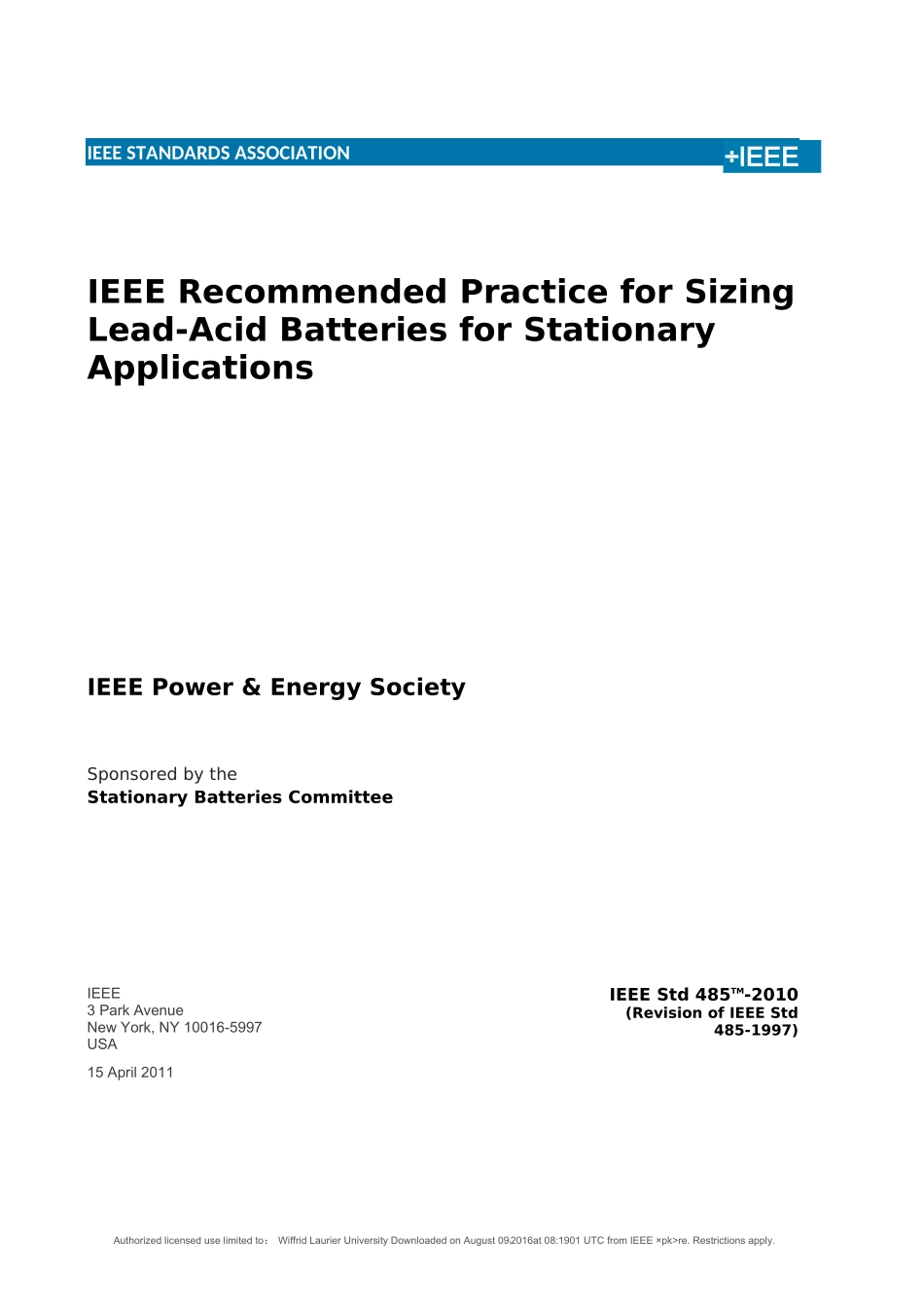Authorized licensed use limited to: Wiffrid Laurier University Downloaded on August 09l2016at 08:1901 UTC from IEEE ×pk>re. Restrictions apply.IEEE STANDARDS ASSOCIATIONIEEE Recommended Practice for Sizing Lead-Acid Batteries for Stationary ApplicationsIEEE Power & Energy SocietySponsored by theStationary Batteries CommitteeIEEE3 Park AvenueNew York, NY 10016-5997USAIEEE Std 485TM-2010 (Revision of IEEE Std 485-1997)15 April 2011÷IEEEAuthorized licensed use limited to: Wiffrid Laurier University Downloaded on August 09l2016at 08:1901 UTC from IEEE ×pk>re. Restrictions apply.Authorized licensed use limited to: Wiffrid Laurier University Downloaded on August 09l2016at 08:1901 UTC from IEEE ×pk>re. Restrictions apply.IEEE Std 485TM-2010(Revision of IEEE Std 485-1997)IEEE Recommended Practice for Sizing Lead-Acid Batteries for Stationary ApplicationsSponsorStationary Batteries Committeeof theIEEE Power & Energy SocietyApproved 8 November 2010IEEE-SA Standards BoardAuthorized licensed use limited to: Wiffrid Laurier University Downloaded on August 09l2016at 08:1901 UTC from IEEE ×pk>re. Restrictions apply.Abstract: Methods for defining the de load and for sizing a lead-acid battery to supply that load for stationary battery applications in full-float operations are described in this recommended practice. Some factors relating to cell selection are provided for consideration. Installation, maintenance, qualification, testing procedures, and consideration of battery types other than lead- acid are beyond the scope of this recommended practice. Design of the de system and sizing of the battery charger(s) are also beyond the scope of this recommended practice.Keywords: battery duty cycle, cell selection, de load, full-float operation, IEEE 485...


